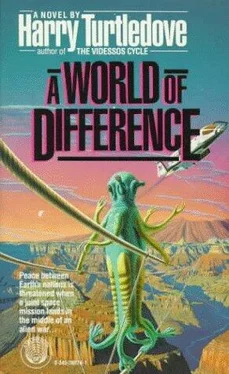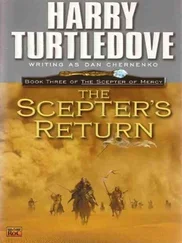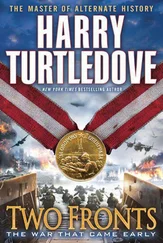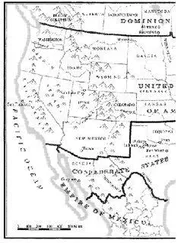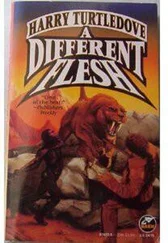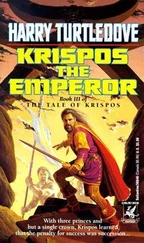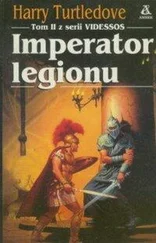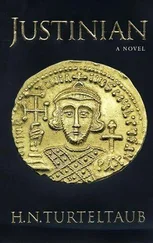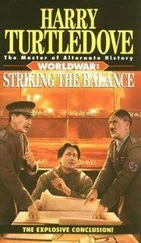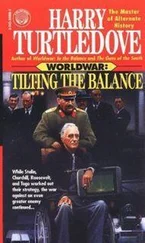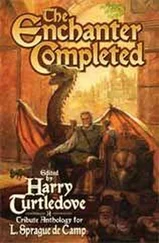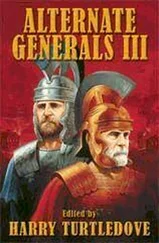Harry Turtledove
A World of Difference
MINERVA is the fourth planet out from the sun in the solar system, the first planet past Earth orbit. At its nearest approach to Earth, Minerva is the brightest object in the sky except for the sun and moon. It then looks to the naked eye like a brilliant, gray-blue star of magnitude 5. 9. Sometimes it may even exceed that brightness for a short period. This is the result of the famous “Minervan flash,” which occurs when breaks in the cloud cover above the planet surface allow the sun to reflect directly off ice or water. Long before the cause of the phenomenon was known, it gave the planet its name: the Greeks called it Athena, after their flashing-eyed goddess of wisdom. Minerva is the Latin name for the same divinity.
Since the invention of the telescope, Minerva has fascinated observers. It is the only worm in the solar system besides Earth where water can exist as a liquid, and the presence of oxygen in its atmosphere has long suggested that, like Earth, it is a home for life.
Since 1965, American and Soviet space probes have greatly added to our knowledge of Minerva. Despite the planet thick, cloudy atmosphere, we now have reliable maps of almost its entire surface. Not until 1976, though, did the Viking I spacecraft actually land on the planet. The Viking analyzed Minerva lower atmosphere, and the craft’s biological experiment package and the photographs it returned to Earth confirmed that there is life on the planet.
Viking I-last photograph, arguably the most famous ever taken, confirmed far more than that. It proved humanity is not alone in the universe, for it shows a Minervan native carrying what cannot be anything but a deliberately manufactured artifact, whether a weapon or simply a pole remains the subject of hot debate. Transmission from Viking I ceased immediately after this photograph was made…
About The Author
HARRY TURTLEDOVE is that rarity, a lifelong southern Californian. He is married and has three young daughters. After flunking out of Caltech, he earned a degree in Byzantine history and has taught at UCLA, Cal State Fullerton, and Cal State Los Angeles. Academic jobs being few and precarious, however, his primary work since leaving school has been as a technical writer. He has had fantasy and science fiction published in Isaac Asimov, Amazing, Analog, Playboy, and Fantasy Book. His hobbies include baseball, chess, and beer.
Irv Levitt pumped away on the exercise bike. Sweat clung greasily to his skin and matted his dark brown hair. He tossed his head. That was a mistake he still made after eight months in space. Little drops spread in all directions.
The anthropologist swore and mopped them out of the air with a soft, absorbent cloth like a big diaper. Without mopping up, the sweat would float around until it hit something-or someone. Jamming six people into a ship as cramped as Athena was tough enough without troubles like that.
Levitt worked the bike with grim intensity until finally, mercifully, the timer rang and let him off the hook. Then he toweled himself off and pushed himself out of the tiny exercise chamber and past the three sleeping cubicles.
On his way by, he stuck his head through the privacy curtain of his own chamber for a moment. The light inside was dim and red; his wife Sarah was tethered to the foam mattress, asleep. He smiled a little and went on to the control room.
Patricia and Frank Marquard were already there, watching the monitor as Minerva flowed by below at almost 19,000 miles an hour. Levitt saw the longing on their faces. It mirrored his own: like him, they wanted nothing more than to get down to the planet so they could start working. She was a biologist, her husband a geologist.
At the moment, the monitor showed mostly ice. That was not surprising; each of Minerva’s polar caps reached about halfway to the equator, the northern a bit more, the southern a bit less. Sometimes the planet looked so frigid and forbidding that even a glance could make Levitt shiver.
Not now, though. The Athena moved north past the edge of the southern polar cap. Through cloud cover, Levitt glimpsed one of the long, deep gorges that channeled meltwater from the icecaps to the seas and lakes of the southern tropics every Minervan spring.
“I think I’d kill for a shower about now, even in water that cold,” he said.
Pat Marquard nodded rueful agreement. “Disinfectant wipes just aren’t the same,” she said. “I’m sick of smelling like an infirmary. I’m sick of short hair, too, and even sicker of having it smell like an infirmary.” Back on Earth, her hair had been a curly blond waterfall that went halfway down her back; she was vain about it. Keeping it only a couple of inches longer than Frank’s had given her something to complain about ever since Athena left the American space station.
“I could go for a shower, too, but I’m not looking forward to gravity again,” Frank said.
Levitt glared at him half seriously. “You have the nasty habit of pointing out things we’d all rather not think about. Just working the bike leaves my legs sore. Having to hold myself up again, walk, run-“ He broke off, shaking his head in distaste.
“We may have to do some running,” Pat said quietly.
She let it drop there, but her eyes, her husband’s, and Irv’s automatically went to one of the two pictures taped above the monitor: the Viking photo. It shared pride of place with Galileo’s first sketch of Minerva through the telescope, but Galileo’s drawing got short shrift. Sometimes Irv stared at the Viking shot so hard that he ignored the planetary view under it. That picture was the reason for Athena, and the reason it had an anthropologist, it had him-aboard: the only glimpse humanity had ever had of another intelligent race.
Ever since Viking was destroyed, people had been searching for words to describe Minervans-or at least this Minervan, Levitt reminded himself; nobody had any idea how typical he, she, or it was. “Fat hat-rack” was about the best short phrase anyone had come up with, and even the learned articles in Science and Nature had not done much better than that.
The creature was essentially cylindrical, better than six feet tall, and about a foot and a half across through most of its height. Half a dozen short, stumpy legs were equally spaced around its base. A like number of arms ringed its torso about a foot below the top; a ring of six eyes sprouted from the bulge there.
No mouth was visible. Some people wondered if the Minervan had one. if so, was it on the side away from the Viking’s camera, or in the center of the top part? Levitt would have bet on the latter; the Minervan looked to be radially symmetrical, not built on the bilateral pattern more common on Earth. He was willing to admit he was just guessing, though.
Each of the Minervan’s legs ended in three claws, each arm in three fingers. Two arms held the Artifact, as the anthropologists had dubbed it. Levitt had no idea what the thing was supposed to be for: it could have been a crook, a flail, a pole vaulter’s pole, anything. He doubted it was intended as a wrecking bar, but it had done the job plenty well.
“Junior doesn’t look as though it’d be very fast,” he said musingly.
“Neither are we, relative to the rest of the big mammals,” Pat said. “We have things besides speed going for us. So do the Minervans, I’ll guarantee you that.”
“That ‘relative’ is a good point, Pat,” Frank Marquard put in. “Without knowing what the local competition is, we can’t tell whether Junior’s a sloth or a gazelle.”
“You’ve been listening to your wife too much. Comes of sharing a cubicle with her, I suppose,” Irv said. He tried to remember when they had started calling the Minervan Junior and failed. Sometime very early on in the flight, anyway. “Me, I don’t care how fast Junior is by local standards. I just want to know whether I can outrun it if it decides to swing the Artifact at me.”
Читать дальше
